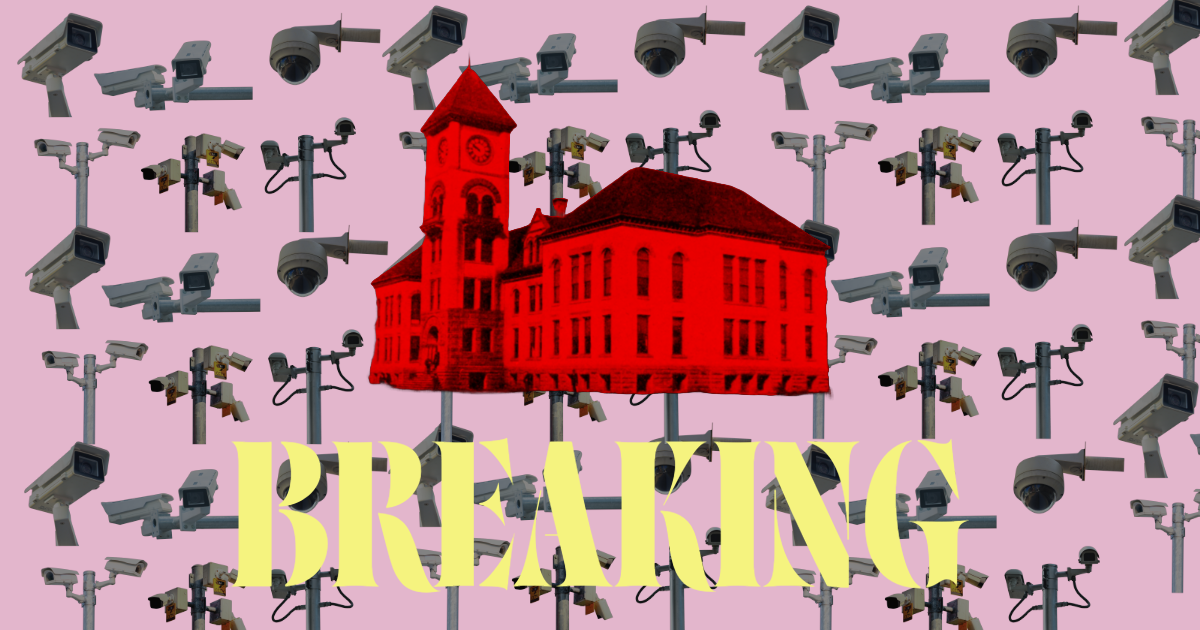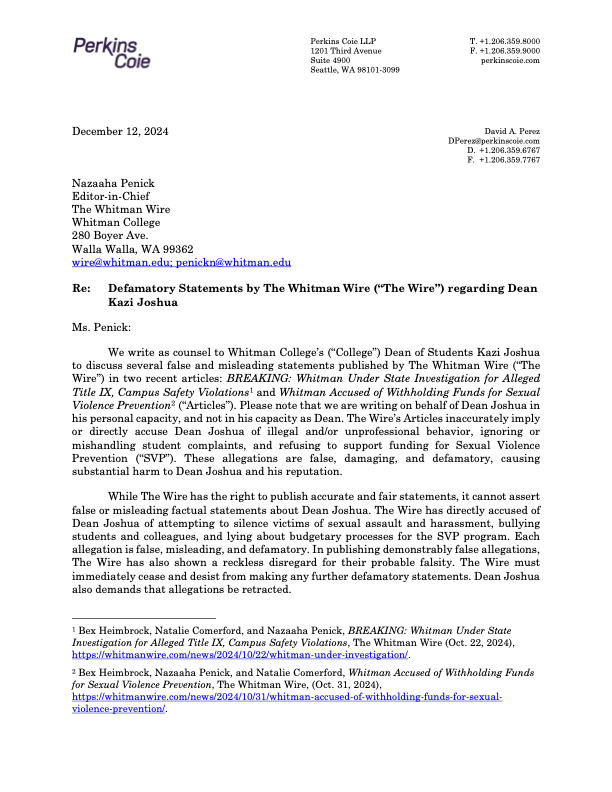A series of proposed budget cuts totaling over 1.7 million dollars has led to outcries among students and faculty. The cuts, proposed by two working groups of division chairs, faculty, staff and administrative members, have been described on student social media as “diabolical.”
One of the most controversial cuts has been to free printing for students. In 2022, Whitman College installed WEPA printers, eliminating the printing center which had previously employed students. While rolling out the printers, Whitman assured students that printing would be paid for through printing credits. Each student is automatically given 35 dollars in their WEPA account and, if they run out, they simply have to email WEPA to ask for more funding.
Under the new budget cuts, however, students can say goodbye to unlimited printing. The proposal aims to “reduce the budget by reducing the amount of free printing for all students or completely eliminating free printing whereby students would pay for printing from day one of each semester.” In the process, they say, the cuts might get students to “think before they print,” supporting the college’s self-described “goal of sustainability.”
Professor of English Gaurav Majumdar says students increasingly struggle with the distractions that come with technology use in the classroom. For Majumdar, who describes himself as “tyrannical” about technology use in the classroom, the importance of printing readings and using physical books cannot be understated.
“When I’m teaching the gateway course for the English major, students need to bring printouts of all the required poetry for my class… when I’m teaching GENS 176, students print quite a bit because, while they read texts mostly in book-form, they sometimes read slim excerpts from much larger books for my section,” said Majumdar.
In a statement posted to the Communications Office ‘Whitman Wire Responses’ website, Vice President of Communications Gina Ohnstad explained that the proposal with the “most traction” is limiting the college’s contribution towards printing to $35 a year. According to Ohnstad, this limit will cover the 580 pages of black-and-white printing or xeroxing each year.
“To be sure, some students with a greater desire or need to print will pay more out of their own pockets, but that’s already the case for other situations (e.g., flex dollars at the Cleveland Commons) at the college,” said Ohnstad.
Majumdar warned that beyond saving money, the proposal risks damaging students’ learning capabilities.
“That would damage students’ learning enormously. I am sure there are more economically sound, and certainly more responsible, ways to save money. Even if there’s some small misuse of printing access, you don’t want to restrict students’ access to text,” said Majumdar.
In a Feb. 24 open meeting on the budget cuts, Vice President for Finance & Administration Jeff Hamrick claimed that Eastern Washington University, though its student population is about four times that of Whitman, prints out less paper per year than Whitman’s roughly half a million pages a year.
“We acknowledge that a culture shift is going to be necessary,” said Ohnstad, “Professors will need to reduce or eliminate their expectation that students will print out long reading or entire books and bring those printouts to class. Professors may need to reconsider policies that wholesale disallow students to use laptops, iPads, or other devices in class.”
A 2015 survey by the University of Nebraska-Lincoln of undergraduate college students across 26 states showed that students reported using their digital devices for non-classroom purposes roughly 11.7 times per day in class, adding up to 21% of class time. Another study by the Canadian Journal for the Scholarship of Teaching and Learning found that almost half of University students surveyed were distracted by technology use in classrooms.
“Textual study is a nonnegotiable aspect of study in the humanities and the social studies … to inhibit, if not to prohibit, students from printing easily on campus would be vandalistic,” said Majumdar, “I urgently ask the college not to put any ceiling on students’ printing capacity.”
In a Feb. 14 email to the campus community, President Sarah R. Bolton cited the reduced population of college-age students nationwide — known as the “demographic cliff” — and the resulting increase in Whitman’s financial aid offers and decrease in college funds as the reason for the budget cuts.
The college expects a $1 million decrease in its cumulative funds in the 2025-2026 school year. This increases to $1.8 million when faculty and staff raises and raised funding support for student workers are factored in.
Beyond printing, the budget cuts include slashing eight staff positions, cutting $5,000 from the annual Undergraduate Conference, and committing to exploring reductions in tenure-track faculty lines.
Once input on the proposals has been gathered from the campus community by March 10, working groups and the President’s Cabinet will tweak the proposals accordingly and make their final decisions, which will then go to the Board of Trustees in early May.
This budget-cut process isn’t a one-off occurrence. According to Hamrick, Whitman’s current five-year model suggests that the college’s finances will require similar management for the 2026-2027 school year.
Other proposals that have received significant concern include the removal of the college’s writing placement process, including the Summer Writing Assessment and subsequent placement in RWPD-170.
Presidential Penn Compact Professor of Philosophy and Education at the University of Pennsylvania Jennifer Morton said in an email to The Wire that higher education “is facing an assault — financially and culturally.”
“Our values are at stake. As administrators confront difficult trade-offs, we must make sure that we prioritize the most vulnerable students,” said Morton, “we saw during COVID-19 that some of our most vulnerable students were left to fend for themselves. We cannot repeat the same mistake.”
While RWPD faces cuts upwards of $182,000 and up to $50,000 is set to be cut from the school’s ADA Physical Barriers Elimination Budget, only $8,000 will be cut in funding for events held at the President’s House and up to $20,000 may be cut in the President’s Discretionary Fund.
“The President’s budget represents about 2% of the total operating budget and the proposed cuts to that area represents a little more than 2% of the total proposed cuts,” said Ohnstad.
“Cutting services that support low-income and first-generation families will only deepen the alienation that such students already feel on campus,” said Morton, “We should make sure that the financial burden is distributed in such a way that those best able to weather it are asked to sacrifice first.”





Politics guy • Feb 27, 2025 at 9:20 am
Politics (and other social science) majors are forced to print hundreds of pages a week because computers are (rightly) not allowed in many classrooms. How does Whitman evaluate the differing print burdens (often determined by professors/departments) undertaken by different students?